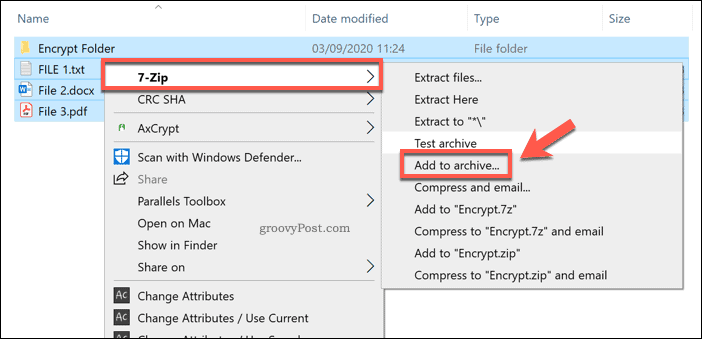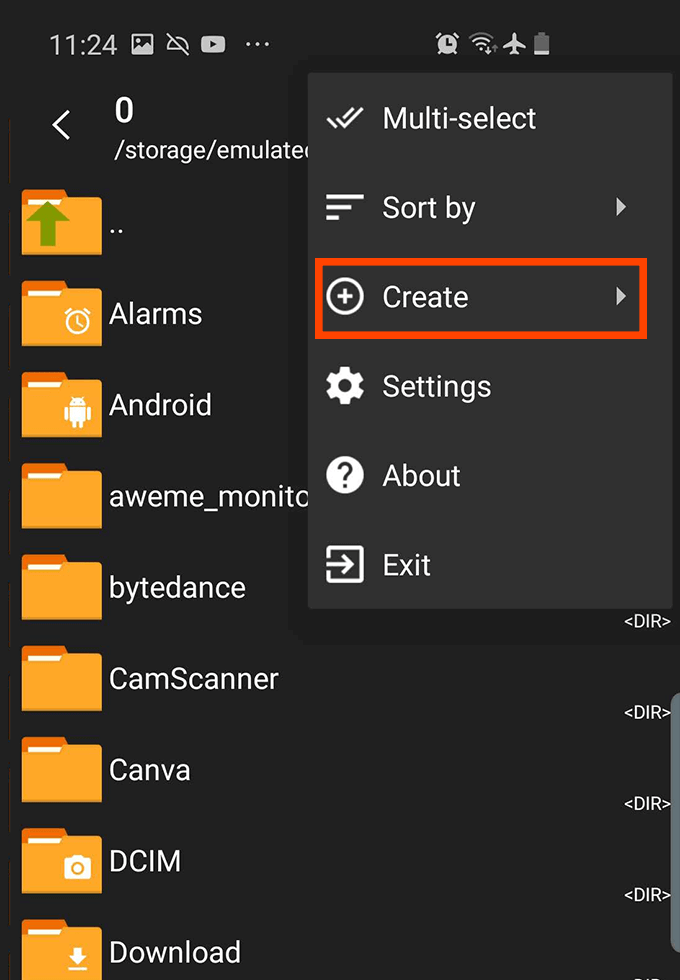Mac Extract Files From Multiple Folders
Follow these steps to open zip files on Mac: Click the Unzip button. From the drop down menu, choose to unzip your files to this Mac, iCloud Drive, Dropbox or Google Drive. A 'Finder style' window will open. You can browse to the folder where you want the files saved. Choose to unzip the Entire Zip file or Selected Items. Once the installation process is over, you are all set to open RAR files. To open a RAR file on Mac, right-click on your RAR file and hover your mouse on “Open With“. From the list of options, select “Extractor” software and all files will be extracted in the same folder where your RAR file is located. Method 2: Using WinZip. F-Vault: hide secret files Keep photo, video and audio files safety. F-Vault provides users with a convenient and safe way to access private files. Easily store secret files in places where others cannot open them. Download on the. App Store; Free Download. On your Mac, do any of the following: Compress a file or folder: Control-click it or tap it using two fingers, then choose Compress from the shortcut menu. If you compress a single item, the compressed file has the name of the original item with the.zip extension. If you compress multiple items at once, the compressed file is called Archive.zip. By default, StuffIt Expander will extract the files into the same folder in which the RAR file was located. For example, if the RAR file was in the Desktop folder, you'll find the extracted files there.
Frequently Asked Questions
Problems downloading fonts or registering

We support all modern browsers, including Firefox, Google Chrome, Safari, Opera, and Edge.
You must have cookies enabled in your browser in order to download fonts or register at FontSpace. For help with enabling cookies, click here.
How to download and unzip a file
When you see a font you want to use, click the Download button on FontSpace and save the file to your computer. Right-click on the file (it will be a zip file) and click the 'Extract To' option.
Mac Extract All Files From Folders
Installing fonts in Windows
Windows 10, Windows 8, Windows 7 or Windows Vista
First run an advanced search for all.jpg files on your C: drive. To search the entire C: drive in Vista go to Start / Search Box and type in ‘ or ’. Use.jpg as the filename. As you're typing you'll see two hyperlinks appear just above where you're typing and one will say Search Everywhere. Mac X Open Multiple Zip Files To One Folder Unzip With OSX you can run a simple terminal command and extract all the files into the same directory without the need of a third party application. OS X Technologies:: Sync Files And Folders Between Multiple Macs? Applications:: Batch Extract Multiple Archives With Password? ITunes:: Create Folders On One IPad And Sync The Folders To Multiple IPads? OS X:: How To Extract.RAR Files On A Mac? Software:: Extract Win - Rar Files In MAC? OS X:: On An Drive, Have Multiple Folders And Sub.
Right-click on the font and choose Install. Or, you can open the font in the default Windows font viewer and click the Install button

Windows XP
Go to Start > Control Panel
Open the Fonts folder.
Browse for the font you want to install (you extracted this from the zip file earlier)
Click OK
All Windows versions
Drag and drop (or copy and paste) the font file to the folder C:WindowsFonts
If you want to temporarily install a font, just Double-click the font file and you can use it in your applications (Microsoft Word, Adobe Photoshop, etc.) while it is left open. To uninstall the font, close the Font Viewer. Download wineskin winery for mac.
Installing fonts on a Mac
Installing fonts in Linux

Font formats
License Info
The license type of a font determines how you may use it.
Personal Use typically refers to any use that is not meant to generate profit, such as:
- Scrapbooking
- Graphic design for personal websites, blogs, etc.
- Flyers or invitations to friends and family
- Churches, charities, or non-profit organizations
- Making T-shirt for yourself or friends at no charge
Mac Unzip Multiple Files To One Folder
Commercial Use is for companies or individuals that may profit from the use of the font, such as the following cases:- Flyer or poster for an event that charges admission
- Printing a T-shirt that you will be selling
- Text or graphics in a book
- Graphic design work (logo, business card, website)
- And any other situations where you are getting paid
Mac Unzip All Files In Folder Linux
In the majority of the licenses, the font designer or author still retains Copyright, which means that you are not allowed to sell the font itself or claim it as your own.Mac Unzip All Files In Folder File
Mac Unzip All Files In Folders
Regardless of the license, if you use a font and enjoy it please consider making a small donation to the font designer.
Bitmap / Pixel Fonts

Certain fonts, such as bitmap or pixel fonts, are best viewed at a specific size. Be sure to turn off anti-aliasing in any software you are using.
To convert from pixel to point:px * .75 = pt (example: 8px is equivalent to 6pt)
To convert from point to pixel:pt / .75 = px (example: 6pt is equivalent to 8px)
Jul 08, 2021
3min Read
Sometimes when you want to download a file, you might notice that it comes in a .zip format. If you don’t know what it is and are having trouble opening it, you’ve come to the right place! This article is going to teach you how to unzip files using default applications in Windows and macOS as well as third-party programs.
Two Ways to Unzip Files
There are two ways to extract zipped files:
- By using your operating system’s built-in software.
- By using third-party tools.
Let’s look at each one of these options in more detail.
1. Using an OS Built-In Tool
First, let’s take a look at how to extract files using native software found in Windows and macOS. Because you’re only using what your computer already has, there is no need to download another tool.
Windows
While it is possible to see the content of a zip file by double-clicking on it on Windows, you still need to extract the files to use it. The Windows default support for .zip goes by the name of Compressed (zipped) folders and here’s how to use it:
- Right-click the file that you want to decompress and choose Extract All.
- Choose the directory where you want to keep the extracted files and click Extract. It is optional to check the box underneath if you need to see the content immediately after the extraction is done.
- The files that were inside the .zip now can be found in the location you picked in step two.
macOS
Archive Utility is Mac’s built-in tool that handles the .zip format. To unzip a file, follow these steps:
- Double-click on the file you want to unzip.
- Once extracted, the file will appear in the same folder as its archive.
If you want to change the default folder location, access Internal Hard Drive -> System -> Library -> Core Services -> Archive Utility. Once there, select Preferences and set the location by clicking Save Expanded Files.
If you’re using Linux, read here for an in-depth guide on how to unzip your file.
2. Using a Third-Party Tool
While it is not necessary to download third-party tools to extract a .zip file, they do come with added features that allow you to customize, password-protect, and repair your zip files.
Below are our recommendations.
7-Zip
This file archiver is a free and open-source program with a 2-10% higher compression rate compared to WinZip and PKZip. It also has its own 7z extension that compresses data 30-70% better than the .zip format.
Although it is only available for Windows, it also has a port for Linux/Posix command line called p7zip.
To unzip with this tool, follow these steps:
- Right-click on the file that you plan to extract. 7-Zip should be listed there after installation.
- Hover your mouse above the program name, and you will see a drop-down menu with multiple commands. Click Extract Files.
- In the next menu, choose the save location by clicking on the three dots, leave it be if you want it in the same folder as the original. Click OK.
- Alternatively, you can also choose Extract Here to immediately save your file in the archive’s location or Extract to [File Name] to make a folder out of the extracted data.
Mac Extract Files From Multiple Folders Excel
Zipware
Just like 7-Zip, Zipware is also a Windows-only extractor. However, it has a few features that stand out, such as a streamlined file manager, a password manager, conversion of all compatible formats to .zip, .exe, or .7z and a virus scan.
Again, decompressing using this tool follows the same method as the previous ones with slightly different options:
- Extract to this folder – for immediate extraction to the location of the zip.
- Extract to this folder + Filenames – for a similar effect but with a folder made out of the file.
- Extract to other… – opens a drop-down menu to choose another location.

Regardless of what tool you use, it is a good practice to delete the .zip file after you extract its content because keeping both consumes more space.
Extract Multiple Zip Folders
What is a .zip File?
Extract Multiple Files
A .zip file is an archive containing one or more files that have been compressed to reduce its size. Zipping a file is useful to spare up to 80% or more storage space.
Additionally, zipping big files enables users to upload and send them faster over the internet, simultaneously decreasing the chance of it being corrupted. Users can also use .zip format to encrypt their data for extra security.
There is plenty of software that can be used to unzip files. However, your computer is generally already equipped with a built-in program that can perform the task just fine.
Conclusion
A zip file is an archiving method that is useful to save storage since it compresses file sizes.
You can unzip files either using default Windows and macOS settings or by utilizing third-party software such as Zipware, and 7-Zip.
The process itself takes only a few clicks, so you can have the task done in no time.
Edvinas is a professional mentor and trainer of customer support agents. When he's not teaching new guys the secrets of providing an exceptional service, he likes to travel the world and play basketball.